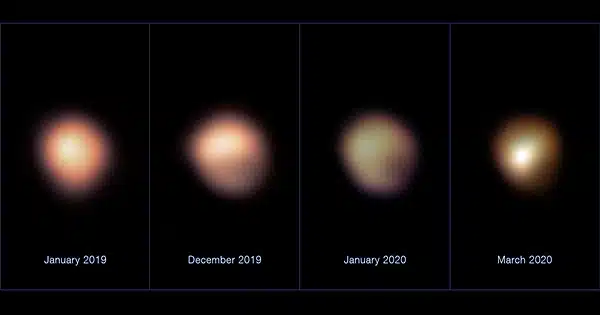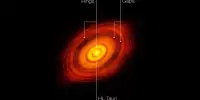You may have noticed Betelgeuse’s remarkable brightness if you spotted Orion before it went below the Sun this year. Astronomers aren’t sure what to make of this brightening, but one team has reinterpreted long-standing patterns in its variability to conclude that it is not only in the carbon-burning stage of its life, but is reaching the conclusion of that stage. If this is the case, the nearby red giant might go through the next stages of its existence in a few decades and detonate during the lifetime of those reading this article.
Betelgeuse, as a highly evolved red supergiant, will undoubtedly become a core-collapse supernova, emitting luminosity comparable to that of the full Moon. Although we know that this will happen soon by cosmic standards, whether it deserves the same classification on human timeframes is debatable.
Betelgeuse, according to traditional wisdom, will not blow its top for another 100,000 years, vexing thousands of generations of astronomers until then. According to some data, it’s closer to a million. The preprint of a manuscript submitted to Monthly Notices of the Royal Astronomical Society but not yet peer-reviewed comes to a quite different conclusion.

All stars begin by fusing hydrogen atoms into helium and continue to do so for the majority of their lifespan. They eventually run out of hydrogen in their core and begin converting helium to carbon, while hydrogen fusion can continue for some time further out. Carbon is then converted to neon, sodium, and magnesium, a process known as carbon burning despite having nothing in common with the chemical process in which atoms ignite in oxygen.
Because supernova explosions occur only after multiple cycles of neon, oxygen, and silicon fusing, we need to know what stage Betelgeuse is in to determine how long it will be before it explodes. Dr. Hideyuki Saio of Tohoku University and co-authors suggest in the preprint that Betelgeuse is not just consuming carbon, but it is also running out.
Betelgeuse, like other stars towards the end of their lives, pulses, causing it to inflate and contract with concomitant fluctuations in brightness. Regular cycles of 185, 230, 420, and 2,200 days, as well as other less predictable variations, have been tracked. The great darkening of 2019-20 was produced in part by a dust outburst, but it also involved the troughs of many cycles colliding.
The case of the study is based on determining which of the pulsation periods is the radial fundamental mode (RFM), the period of which is intrinsically connected to the radius of the star. If, as the authors claim, the RFM is the 2,200-day cycle rather than the 420-day cycle, then Betelgeuse must be substantially larger than previously imagined. Such a scale – possibly around 1,300 times the radius of the Sun – for a star of its mass would indicate it is nearing the conclusion of its carbon-burning phase.
The end is only a few decades away once the carbon-burning phase is over. The authors note that it is impossible to say how near Betelgeuse is to fuse the last of its carbon, but being late in the game to a process that lasts a few thousand years implies that there can’t be much longer.
It may appear that resolving the issue over Betelguese’s size would be simple, yet there is significant doubt concerning its distance. It has been quite difficult to determine whether it is a very large star 530 lightyears from Earth or an incredibly massive star 900 lightyears away.
Supernovas can cause significant harm to planets in their galactic neighborhood and have been implicated in prior extinction catastrophes. Even at the most conservative estimate, Betelgeuse should be far enough away to cause no harm while still providing us with a front-row seat to possibly the galaxy’s first supernova since 1604. The only thing we have to worry about is losing out on a spectacular fireworks display.
















